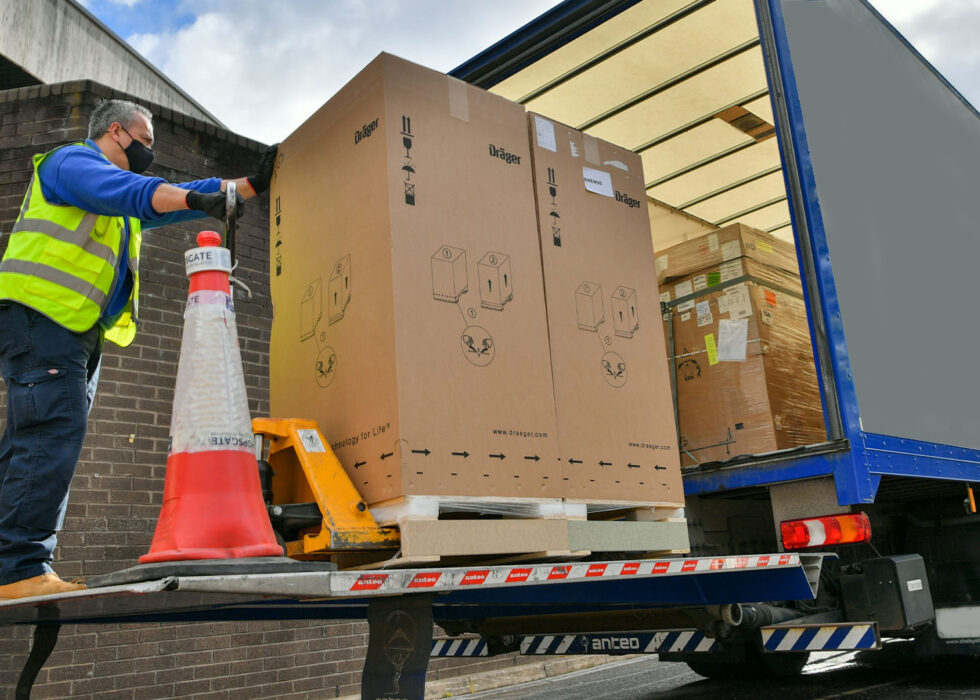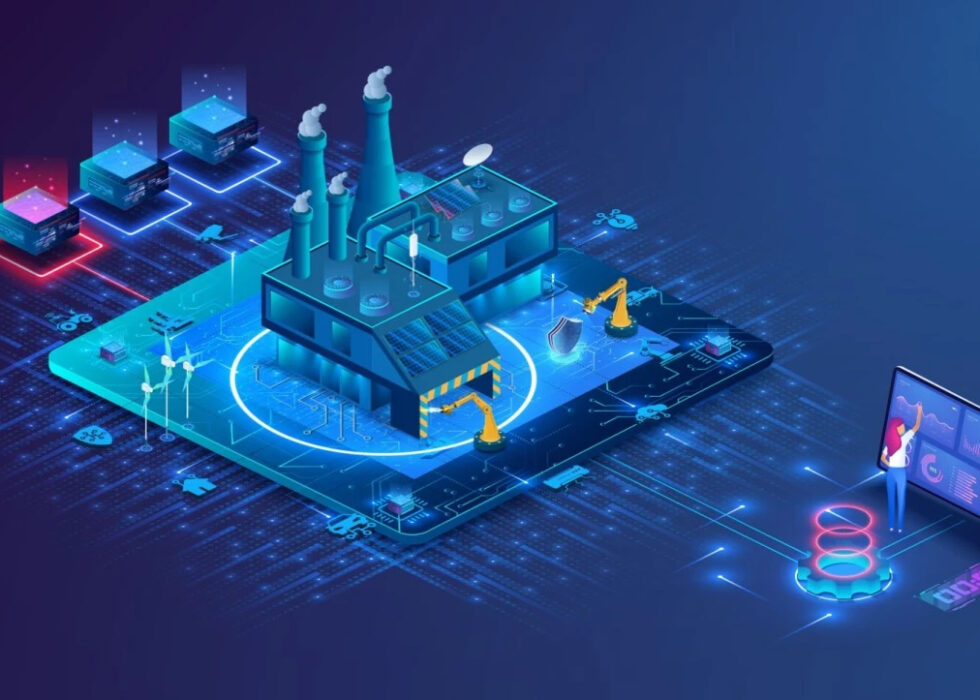7 Reasons Medical Logistics are Crucial for Healthcare
Healthcare continues to be one of the most dynamic industries, with new advances and technologies coming on the scene every day. But getting these technologies and medical equipment to those who will benefit from it most is where medical logistics plays a crucial role. For 3PL’s with a specialty in medical and healthcare logistics, ensuring an effective and comprehensive program is more important than ever.
Medical logistics goes beyond just transporting medicines and equipment—it’s about saving lives. In this blog, we’ll explore why medical logistics is integral to the healthcare system, and how it plays an essential role in maintaining seamless operations.
1. Ensuring Timely Delivery of Essential Supplies
Timely delivery of medications, vaccines, and medical devices is crucial in healthcare. Delays can lead to compromised patient care, which is why efficient logistics are indispensable.
Without a robust logistics network, even the most advanced hospital facilities can find their operations stifled. This includes procuring essential items like biopsies, pharmaceuticals, and biological samples, along with equipment used for testing and diagnostics. An efficient logistics system ensures that these items are warehoused and delivered with precision, ultimately contributing to smoother medical procedures.
Moreover, having a reliable logistics partner is not just about meeting delivery windows; it’s about outmaneuvering the unpredictability that often accompanies healthcare demands. As we see here at TechTrans, sudden needs for critical equipment repairs underscore the necessity for a logistics partner that can respond swiftly, preventing any disruption to patient care.
2. Maintaining the Cold Chain
Certain medical supplies, such as vaccines, require precise temperature conditions. Medical logistics ensure that the cold chain is maintained from start to finish, preserving the efficacy of these critical supplies.
A disruption in the cold chain can render pharmaceuticals less effective or even useless. To avoid this, logistics companies incorporate state-of-the-art technology that includes real-time tracking systems to ensure products remain within the required temperature threshold throughout transit.
Beyond temperature control, having an efficient supply chain infrastructure is critical to meeting demand when needed. As we saw with the cold supply chain issue during the pandemic, a supply chain fraught with logistics challenges can make it difficult, if not impossible, for medical and pharmaceutical companies to get critical supplies and vaccines to consumers when it matters.
3. Optimizing Inventory Management
Efficient logistics systems help healthcare facilities manage their inventory better, ensuring that essential supplies are always in stock while avoiding excess that could lead to waste.
By leveraging logistics expertise, healthcare facilities can strike a balance between supply and demand. For instance, understanding how inventory fluctuations can impact costs enables facilities to adopt strategies that avoid stock-outs and overstock situations. As outlined by the Kaizen Institute, effective inventory, warehousing and distribution strategies can significantly reduce delivery times and mitigate costs associated with poor planning or lack of visibility.
4. Enhancing Patient Care and Safety
By ensuring that all necessary medical supplies are available when needed, medical logistics play a direct role in enhancing patient care and safety, allowing healthcare professionals to provide optimal treatments.
For example, the rapid distribution of Durable Medical Equipment (DME) like hospital beds and mobility aids can significantly enhance patient comfort and care, especially in home settings. The growth of home-based healthcare, as discussed in this DME Logistics Needs blog, underscores the importance of robust logistics solutions that are nimble enough to adapt to growing and diverse care environments.
5. Streamlining Costs through Efficiency
Streamlined logistics processes lead to cost savings by reducing delays, errors, and waste. This allows healthcare facilities to allocate resources more effectively.
Investing in a comprehensive logistics service eliminates the burden of managing warehousing spaces. As hospitals navigate fluctuating demands, outsourcing logistics allows them to pay only for the services they need, thus optimizing operational budgets.
6. Adapting to Technological Advancements
With the advent of technology such as AI and IoT, medical logistics continue to evolve, offering innovative solutions that enhance tracking, forecasting, and delivery processes.
Modern logistics tools provide unparalleled visibility into the supply chain, allowing healthcare providers to forecast needs accurately and respond proactively. Innovations such as real-time ambient condition monitors or use of Digital Twins technology assure stakeholders of product safety, built-in efficiencies and cost savings, and even compliance with regulatory bodies.
7. Supporting Disaster Response and Preparedness
In times of crisis, an efficient medical logistics system ensures rapid deployment of essential supplies and equipment, supporting emergency response efforts and disaster preparedness.
During disasters, the need for a swift medical response can be the difference between life and death. Logistics play a pivotal role by swiftly mobilizing resources where they are most needed. A proactive stance taken in logistics planning can greatly improve the effects of unexpected strains, and allow a timely logistics response to significant crises and challenges.
In the end, having a comprehensive view and real-time management of products and equipment in the healthcare supply chain is crucial to effective medical logistics and overall improved healthcare.
The Role of Comprehensive Logistics in Modern Industry
In our modern, globally connected era, comprehensive logistics has emerged as a crucial component for success. Whether it’s ensuring timely delivery or optimizing supply chains, understanding the full scope of logistics can give a competitive edge. Let’s explore how logistics plays a vital role in modern industry.
Understanding Comprehensive Logistics
Comprehensive logistics encompasses the complete management of the flow of goods, services, and information between the point of origin and consumption. This holistic approach involves not only the physical movement of products but also the coordination of various logistical components such as transport, warehousing, and inventory management. The goal is to satisfy customer requirements efficiently and economically.
Integrated logistics solutions are becoming a fundamental part of this strategy, as they allow businesses to address logistical challenges with innovative and sustainable solutions. This approach significantly influences a company’s ability to stay competitive in an ever-evolving market by reducing redundancies and supporting seamless operations.
Modern industry has witnessed a seismic shift towards comprehensive logistics due to numerous factors, including globalization and technological advances. Integrating the latest technologies like blockchain, IoT, and artificial intelligence is vital in logistics management by enhancing transparency, accuracy, and efficiency. For instance, automation and digital tracking systems provide real-time data, minimize errors, and streamline processes that were otherwise cumbersome or prone to delay. With these innovations, companies can focus not just on moving products but ensuring a robust strategy that integrates multiple logistics processes into one cohesive system.
One key benefit of comprehensive logistics is the reduction in total cost of installation and delivery as highlighted by TechTrans’ solutions. Streamlining logistics through a single-provider minimizes coordination complexities and hidden costs associated with managing multiple contractors. This one-stop-shop approach captures how businesses can tap into economic efficiencies while maintaining control over logistics performance metrics. By tying all logistical components together, companies can offer predictable and scalable solutions that are instrumental in tackling complex global supply chain challenges.
Enhancing Supply Chain Efficiency
Effective supply chain management stands at the heart of successful logistics strategies, driven by the need to enhance the speed and reliability of product delivery from manufacturers to consumers. By streamlining the various processes involved, companies can improve efficiency, reduce lead times, and meet higher customer expectations.
For many businesses, adopting strategic end-to-end supply chain solutions has proven advantageous, as they mitigate risk, optimize operations, and offer significant cost savings. These integrated systems consolidate resources, facilitating better decision-making and adaptation to market fluctuations.
To further improve supply chain efficiency, companies are also investing in digitization and automation, addressing communication challenges inherent in handling multiple suppliers. In practice, this shift translates to less downtime, improved supply chain transparency, and the ability to track every movement of goods in real-time. This not only ensures efficient handling of resources but also nurtures strategic partnerships and builds a resilient supply chain that can withstand external pressures, whether economic or environmental.
The Impact on Cost Management
Logistics plays a pivotal role in controlling costs across the supply chain. The efficiency gained from well-structured logistics systems translates into significant savings for businesses by optimizing routes, consolidating shipments, and utilizing the latest technology to anticipate and react to inefficiencies. Implementation of integrated logistics approaches reduces redundancies and promotes cost-effective delivery mechanisms. By migrating to holistic management solutions, companies unlock the potential for resource optimization that amplifies their competitive edge.
In many cases, particularly in industries fraught with driver shortages, logistics reforms present an answer to soaring transportation costs, while also addressing service continuity. By tapping into non-asset-based logistics providers–such as TechTrans–which have the flexibility to access various providers, organizations can sidestep the pitfalls associated with internal shortages and capitalize on best-in-class policies. This not only helps fill logistical gaps but looks towards more sustainable and autonomous solutions for long-term cost management and operational effectiveness.
Ultimately, leveraging comprehensive logistics tools provides organizations with a total view of their supply chain, enhancing decision-making to avoid unnecessary expenditures. Insights derived from data analytics empower teams to anticipate demand, optimize stock levels, and efficiently allocate resources. This is key in not only sustaining but enhancing productivity across sectors, allowing companies to thrive in an increasingly competitive global market.
Sustainability in Logistics
With environmental concerns on the rise, logistics is at the forefront of implementing sustainable practices. This shift is driven by both corporate responsibility and market pressure to reduce carbon footprints and promote eco-friendliness. The transition towards sustainable logistics strategies includes processes for optimizing fuel efficiency, the adoption of electric vehicles, and green warehouse facilities. Such initiatives significantly lower emissions and align logistics operations with broader environmental goals—strategies that are also attractive to stakeholders who prioritize corporate sustainability governance.
Besides environmental benefits, sustainable logistics yield socio-economic advantages by creating a resource-efficient ecosystem that supports long-lasting business growth. The integration of green technology within logistics practices, such as renewable energy solutions and energy-efficient equipment, carries commercial incentives by reducing costs and increasing the value perception among customers and partners. Companies committed to sustainability not only future-proof their operations but also lead the industry in setting new standards for innovation-driven logistics solutions.
As logistics evolves, it is clear that sustainable practices will play an increasingly central role. The industry is gradually making strides toward a future where human and environmental health are at the forefront of operational design.
Future Trends in Logistics
As technology evolves, so does its application in logistics. The rise of artificial intelligence (AI) continues to refine logistics operations, offering predictive analytics and real-time decision-making capabilities that optimize supply chain performance. AI-driven logistics solutions facilitate data assimilation and enable firms to anticipate challenges before they arise, ensuring seamless integration across all logistical nodes. The expanding role of AI marks a transformative phase for logistics, emphasizing precision and agility in fulfilling complex consumer demands.
Furthermore, blockchain technology holds promise for ensuring transparency and security within supply chains. Its ability to provide immutable records and facilitate trust among participants is paving the way for smarter and more secure logistics practices, minimizing potential fraud and error across all transaction layers in an organization. As these technologies mature, the logistics landscape is braced for change, with these tools propelling the industry toward greater levels of trust, accountability, and operational fluidity.
Embracing Logistics for Future Success
Comprehensive logistics is undeniably a backbone of modern industry. From optimizing supply chains to embracing sustainable practices, businesses that harness the power of logistics can expect enhanced efficiency and competitive advantages. As the global supply chain continues to evolve, the importance of efficient and cost-effective logistics management will only grow.
Exploring the Digital Twins Concept in the Supply Chain
The use of technology within the supply chain only continues to grow and become increasingly integrated in day-to-day operations. Those wanting to stay ahead of the curve need to consider some of the outlying technologies that are gaining traction. One such technology is the concept of Digital Twins. This innovative approach hopes to bring unprecedented levels of efficiency, visibility and control to traditional supply chain and logistics operations.
So exactly what are Digital Twins? Essentially, a Digital Twin is a virtual replica of a physical object, process or system. In the context of supply chain and logistics, Digital Twins replicate entire supply chain networks, including warehouses, distribution centers, transportation fleets and even individual products. These virtual models are created using real-time data from sensors, IoT devices (such as activity trackers, connected instruments in vehicles or asset and inventory tracking) and other sources, allowing for accurate simulations and analysis of various scenarios.
In today’s competitive business environment, optimizing supply chain and logistics operations is essential for staying ahead. Digital Twins offer a solution to achieve this goal, providing businesses with a simulated copy of their supply chain network.
Some benefits for supply chain providers include:
- Enhanced Visibility—Offers real-time insights into the status and performance of every component of your supply chain, from warehouses to transportation fleets.
- Optimization through Simulation—Can run simulations based on real-time data to identify bottlenecks, inefficiencies and risks within your supply chain processes. Testing different strategies and scenarios virtually can optimize routes and resource allocation.
- Predictive Maintenance—Monitors equipment and assets in real-time to anticipate maintenance needs before they lead to downtime or disruptions. Also helps implement predictive maintenance schedules based on data collected from sensors and IoT devices.
- Proactive Risk Management—Continuously monitors factors such as weather patterns, geopolitical events and supplier performance to identify potential risks and disruptions before they occur. Can implement contingency plans and mitigation strategies in advance.
- Improved Collaboration and Communication—Fosters greater transparency and coordination among stakeholders by providing access to real-time data and insights. Enhances efficiency, responsiveness and customer satisfaction across the supply chain ecosystem.
- Driving Innovation and Product Development—Leverages insights from virtual simulations and analysis to identify opportunities for optimization, automation and improvement within your processes. Can aid in developing new products, services and business models tailored to market demands.
As this concept matures, Digital Twins have the potential to bring unprecedented levels of visibility, efficiency and control to the supply chain and logistics industry. By creating virtual replicas of entire supply chain networks and leveraging real-time data and simulations, companies can optimize their operations, enhance risk management and drive innovation.
Though the technology is still in its earlier stages, indications show it may quickly become a key tool for businesses looking to remain competitive in today’s dynamic marketplace.
The Benefits of 3PL vs. Supply Chain Vertical Integration for Manufacturers
In the ever-evolving world of manufacturing and logistics, businesses must constantly assess their operational strategies to stay competitive and efficient. One of the key decisions manufacturers often face is whether to rely on a third-party logistics provider (3PL) or manage supply chains internally through vertical integration – which essentially brings all logistics operations in-house. Both approaches have their merits, but understanding the benefits of 3PL versus supply chain vertical integration is crucial for manufacturers to make informed decisions.
1. Cost Efficiency
Manufacturers looking to optimize their costs often turn to 3PL providers. By outsourcing their logistics needs, they can leverage the 3PL’s expertise, infrastructure, and economies of scale, thereby reducing overhead expenses. A 3PL can be a single-source provider, negotiating better shipping rates, warehouse costs and transportation fees due to their extensive network and established relationships. In contrast, supply chain vertical integration may involve substantial capital investments in building and maintaining infrastructure, which can be cost-prohibitive for smaller manufacturers.
2. Expertise and Focus
3PL providers are logistics specialists. They bring deep industry knowledge and experience to the table, ensuring that manufacturers can concentrate on their core competencies. This specialized focus allows manufacturers to enhance product quality, innovation and market responsiveness, as they are not distracted by the complexities of supply chain management. On the other hand, vertical integration necessitates diverting resources and attention away from core manufacturing functions, potentially leading to a dilution of expertise.
3. Scalability
Manufacturers often experience fluctuations in demand. A 3PL’s flexibility and scalability can accommodate such changes effectively. When demand is high, they can quickly scale up their logistics operations, and when it slows down, they can scale down accordingly. In contrast, supply chain vertical integration can be less flexible, as manufacturers have already invested in fixed infrastructure, making it challenging to adapt to market dynamics.
4. Risk Mitigation
3PL providers often offer risk mitigation services, including inventory management, supply chain visibility and disaster recovery planning. They are equipped to handle unexpected disruptions, such as natural disasters, labor strikes or supply chain disruptions. Manufacturers that vertically integrate their supply chains may find it challenging to implement robust risk mitigation strategies without significant investments and expertise.
5. Global Reach
For manufacturers with international ambitions, 3PL providers are well-positioned to provide global logistics solutions. They have established relationships and networks across borders, which can significantly reduce the complexity of international supply chains. Manufacturers would have to replicate these capabilities themselves, involving substantial investments and a steep learning curve in the case of vertical integration.
6. Reduced Administrative Burden
Outsourcing logistics to a 3PL can significantly reduce the administrative burden on manufacturers. 3PL providers manage paperwork, compliance, customs and regulatory requirements, saving manufacturers valuable time and resources. In contrast, vertical integration requires manufacturers to handle all these tasks in-house, which can be overwhelming and costly.
7. Focus on Core Competencies
Manufacturers can channel their resources and efforts into what they do best: manufacturing high-quality products. By partnering with a 3PL, they free up time and energy to invest in research, development, and production, rather than logistics and supply chain management. Vertical integration may distract manufacturers from their core competencies, potentially affecting product quality and innovation.
8. Technology and Innovation
3PL providers often invest heavily in state-of-the-art technology and innovation to optimize supply chain operations. Manufacturers who partner with 3PLs gain access to these tools and technologies without the need for large capital investments. In contrast, vertical integration can require substantial investments in technology and R&D to keep pace with industry advancements.
9. Reduced Lead Times
3PL providers are skilled at optimizing supply chain processes, which can lead to shorter lead times for manufacturers. Reduced lead times can result in faster order fulfillment, improved customer satisfaction, and a competitive edge in the market. Vertical integration may not provide the same level of supply chain efficiency, as it may lack the expertise and resources of specialized 3PLs.
10. Flexibility and Adaptability
In a rapidly changing business environment, adaptability is crucial. 3PL providers can quickly adapt to new market trends and technologies, allowing manufacturers to stay competitive. Vertical integration may limit adaptability, as it can be more challenging and time-consuming to change internal processes and systems.
The decision to use a 3PL or pursue supply chain vertical integration should be made with careful consideration of the specific needs and goals of the manufacturing business. While vertical integration may offer more control over the entire supply chain, 3PL providers bring numerous benefits, including cost efficiency, expertise, scalability, risk mitigation and a reduced administrative burden. Moreover, they enable manufacturers to focus on their core competencies, stay competitive in the global market, and access the latest technology and innovation.
If you have questions about which approach is right for your organization, contact us today.








